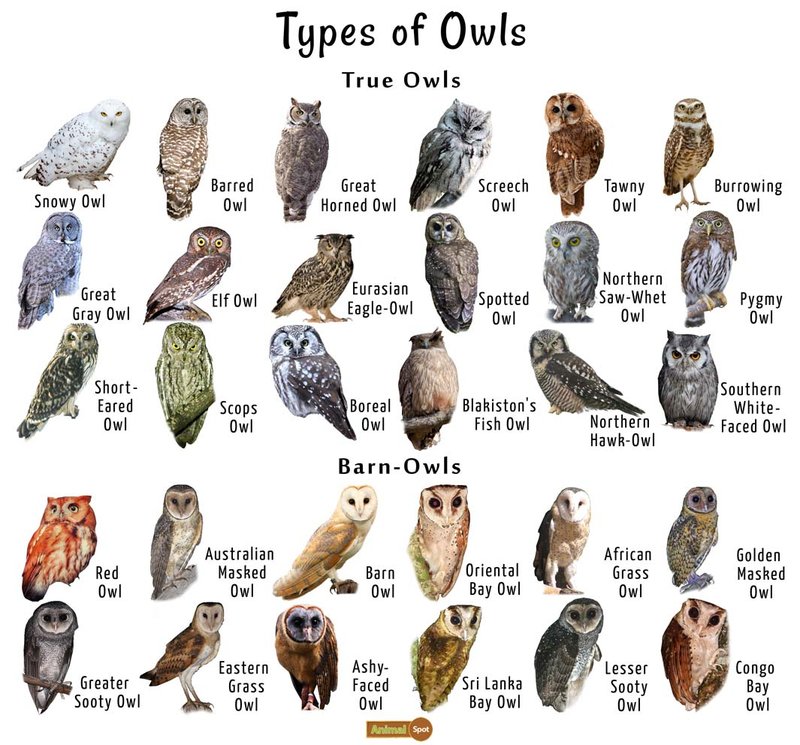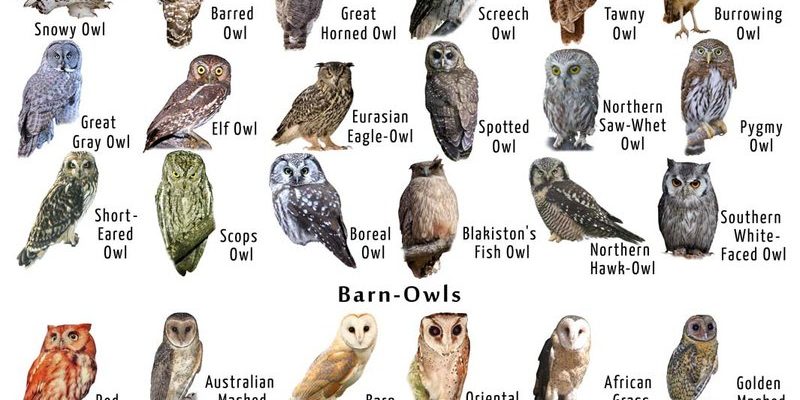
You might be surprised to learn that while owls share some characteristics with other birds, they also stand apart in significant ways. In this article, we’re going to explore how owls differ from similar bird species—like hawks, eagles, and other raptors. We’ll dive into their hunting styles, physical features, and even vocalizations. By the end, you’ll have a clear sense of what sets owls apart in the avian world.
Physical Characteristics
Owls have some pretty distinctive features that help them thrive in their environments. First off, let’s talk about those big, round eyes. Unlike hawks or eagles, which have sharp, angled features, owls have large, forward-facing eyes that allow them to judge distance accurately. This is essential for spotting prey in low light. You might feel like they can see right through you!
In addition to their eyes, their unique facial discs help collect sound, making them expert hunters. This is why you might notice that when an owl turns its head, it appears to be listening intently. In contrast, birds like hawks have a more streamlined head shape, which aids them in spotting prey from high altitudes. The comparison really highlights how each species has evolved its own set of tools for survival.
Another key difference is their coloration. Owls typically have mottled feathers that blend seamlessly into their surroundings, perfect for camouflaging during the day. While some other birds like sparrows also use camouflage, they might not have the same intricate patterns, which can be a game changer when evading predators.
Hunting Techniques
When it comes to hunting, owls take a different approach compared to many other birds. Most owls are nocturnal, which means they hunt at night. Their specialized vision allows them to see in the dark, while their silent flight—thanks to unique feather structures—lets them swoop in on unsuspecting prey without a sound. This is quite different from hawks, which usually hunt during the day using vision and speed to catch their meals.
Owls primarily feed on small mammals, birds, and insects. They have a unique way of consuming their prey—often swallowing small creatures whole or capturing them and tearing them apart with their hooked beaks. Hawks and eagles, on the other hand, tend to rely on their sharp talons for gripping and tearing flesh, showcasing a more aggressive hunting style.
Interestingly, some owls are known to “cache” their food, meaning they store it for later. Picture a squirrel hiding nuts for winter; this behavior is less common among other birds of prey, emphasizing another way owls manage their diets.
Vocalizations and Communication
When you hear an owl hooting in the night, it’s hard not to feel a sense of wonder. Owls have a range of vocalizations, from deep hoots to softer coos, which they use for communication. Each species has its own “vocabulary,” and these sounds can convey everything from mating calls to territory warnings. Honestly, it’s like their own little language!
In contrast, many other birds, such as sparrows or finches, often sing in more melodious ways, which can be lovely to hear but serve different purposes. For instance, the sharp calls of hawks might serve to communicate quickly in the heat of the hunt, whereas owls’ calls are more about establishing presence in the quiet of the night.
Let’s not forget about the fascinating behavior called “mobility vocalization,” where other birds will sometimes join forces to harass an owl if they sense danger. It’s a bit like a neighborhood watch group coming together!
Habitat and Nesting
Now, let’s switch gears and talk about where owls call home. Generally, owls prefer environments that provide plenty of cover and hunting opportunities, such as forests, grasslands, or even urban areas. Their ability to adapt to different habitats is impressive; just think about how some might perch quietly on a city rooftop!
Nesting habits are also quite different. Owls often use old tree cavities or even abandoned nests of other birds, while species like eagles build large, conspicuous nests high up in trees or cliffs. This difference doesn’t just influence where they live, but also how they raise their young.
Owls are known to lay fewer eggs than many raptors. For instance, while a hawk might lay three to five eggs in a prominent nest, an owl may only have one to four and often keeps them hidden. This strategy could protect their young from potential predators—a key survival tactic.
Behavioral Differences
You might be wondering about how owls behave compared to similar birds. One striking trait of owls is their solitary nature. While many hawks and eagles are more social, often seen hunting in pairs or family groups, owls typically prefer to go it alone. This independence can be a double-edged sword; it gives them more control over their territory but can also mean a tougher time during breeding seasons.
In terms of activity levels, owls tend to have a slower, more methodical approach to life. They sit and wait patiently for the right moment to strike. In contrast, many raptors demonstrate a more energetic and dynamic behavior, soaring high and scanning the ground for movement.
This difference in behavior can also affect their adaptability. While owls have finely-tuned their skills for night hunting, other birds of prey might adapt their hunting strategies based on changing environments or food availability. It’s a fascinating glimpse into how evolution shapes behavior!
Conservation Status
Let’s touch on a serious topic—conservation. Owls and their habitats face various threats, including habitat loss, pollution, and climate change. As natural predators, their decline can signal problems in the larger ecosystem. The plight of the barn owl, for example, has raised awareness about the importance of preserving agricultural habitats.
In contrast, some species of hawks and eagles have made remarkable comebacks thanks to conservation efforts, showing that proactive measures can work wonders. It’s a powerful reminder that while some species are struggling, others can rebound with a bit of help.
Understanding these differences not only enriches our appreciation for owls but also reinforces the need for conservation initiatives. If we care about these incredible birds, we need to advocate for their environments and support efforts to protect them.
So, the next time you spot an owl perched quietly on a branch, remember what makes these birds so special compared to their feathered relatives. From their striking physical features and unique hunting strategies to their mysterious calls and solitary nature, owls truly stand apart in the avian world.
By appreciating these differences, we can better understand the roles each species plays in our ecosystem. Whether you’re drawn to the mystery of owls or the agility of hawks, there’s a world of wonder waiting in the skies. Let’s keep that curiosity alive and support the conservation of all these amazing bird species!

